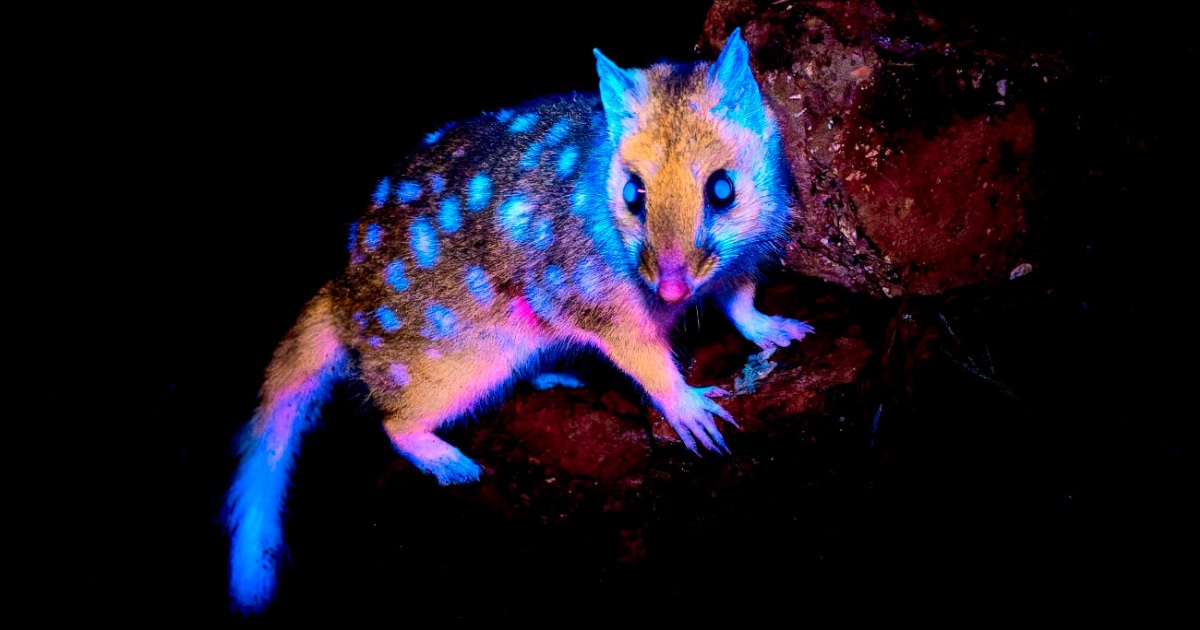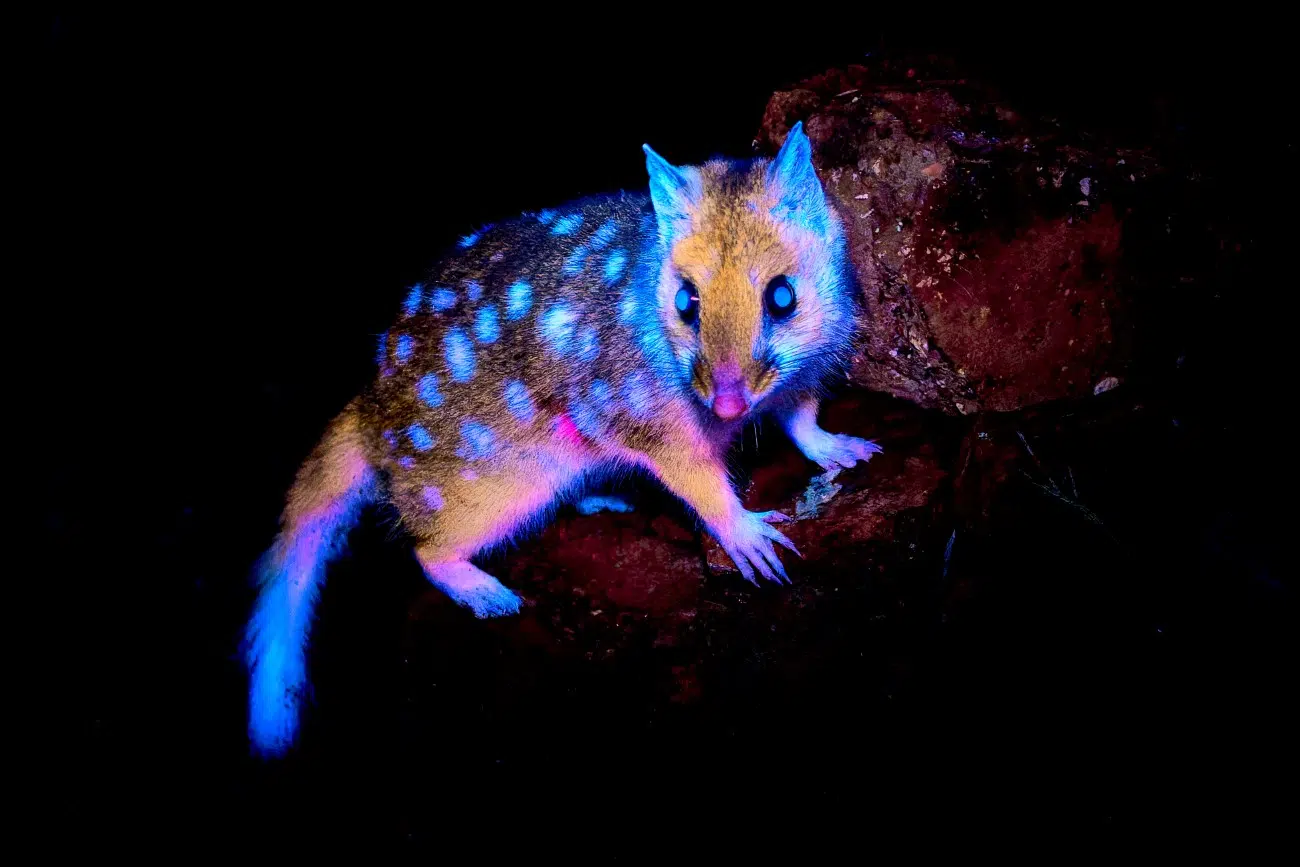
“The Magic Rat and His Slick Machine” by Ben Alldridge, shows the scientific value of other specialized camera equipment or photographic process
“In Tasmania’s southwest wilderness, many creatures stalk the night. Eastern quolls (Dasyurus viverrinus) are among them, harboring a very neat trick from us. Where their fur is normally fawn or black, under certain wavelengths of light, they exhibit a process referred to as biofluorescence – like nature’s version of a white shirt glowing at a disco. All of the light and color in this image is the subject’s natural glow in response to invisible UV light, exploding from its natural sandy colouration. This is the first documentation of the species glowing in the wild and forms part of ongoing research into the impacts of light pollution.”
Tasmania’s Beaker Street Festival, a weeklong celebration of science and art, has announced the 12 finalists of its photography contest. The Beaker Street Science Photography Prize is yet another demonstration of the artistry of the scientific photography community. From rare bioluminescent animals to the colorful Aurora Australis, all of the shortlisted images are prizeworthy.
One exceptional highlight of this group is Ben Alldridge’s photo of an Eastern quoll at night. This endangered medium-sized marsupial, which is now only found in the wild in Tasmania, glows in the night thanks to a UV light bringing out its bioluminescence. Remarkably, Alldridge’s photo is believed to be the first time someone has documented an Eastern quoll exhibiting this behavior in the wild.
“This year’s finalists really capture what Beaker Street is all about. Making science visible, beautiful and emotionally resonant,” said Festival Founder and Executive Director Dr Margo Adler. “These photographs let us see the world differently, and in some cases, quite literally reveal things we’ve never seen before.”
All of the finalists will be exhibited at the Tasmanian Museum and Art Gallery (TMAG) from August 6 to August 31 as part of the Beaker Street Festival. During this time, the public will be able to vote for their favorite image, which will be announced at the end of the festival. The photography prize is just one of 70 events that will unfold throughout the Beaker Street Festival in order to expose the public to the world of science.
Here are the incredible finalists of the Beaker Street Science Photography Prize.
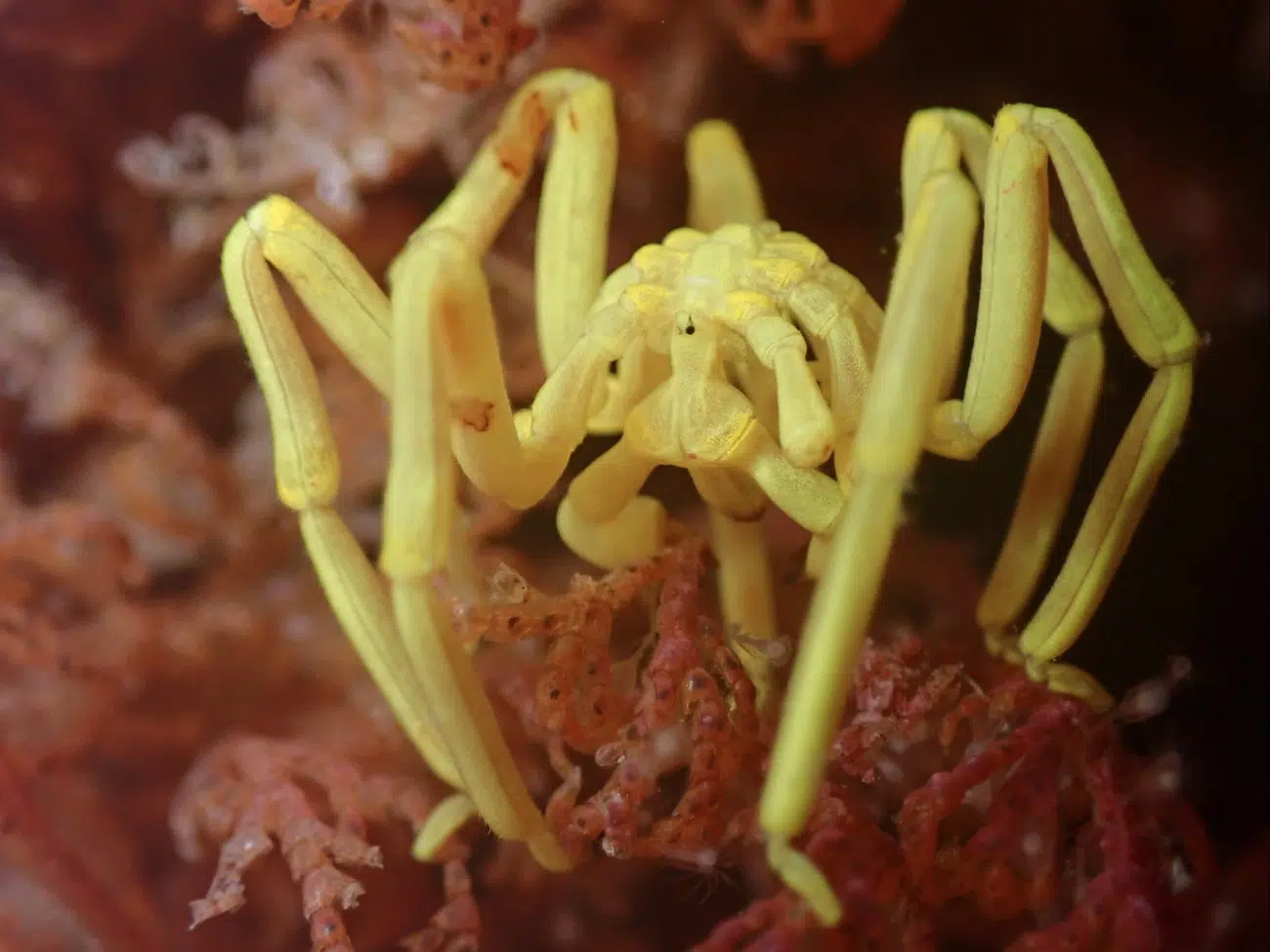
“Sea Spider” by Nicolas Horniblow, Utilizes macrophotography
“Pictured here is a specimen of Tasmania’s Pallenella ambigua, a small and cryptic marine arthropod species belonging to class Pycnogonida, better known as sea spiders. These animals don’t possess a traditional respiratory system and instead rely on pores along the exoskeleton of their legs to extract oxygen from the surrounding seawater via diffusion. Despite their alien characteristics, they are often overlooked or forgotten by divers and biologists in favor of larger and more charismatic creatures. To shine a light on the lesser-known creatures of the ocean is to better consider our impact on the marine environment at every tier and scale.”
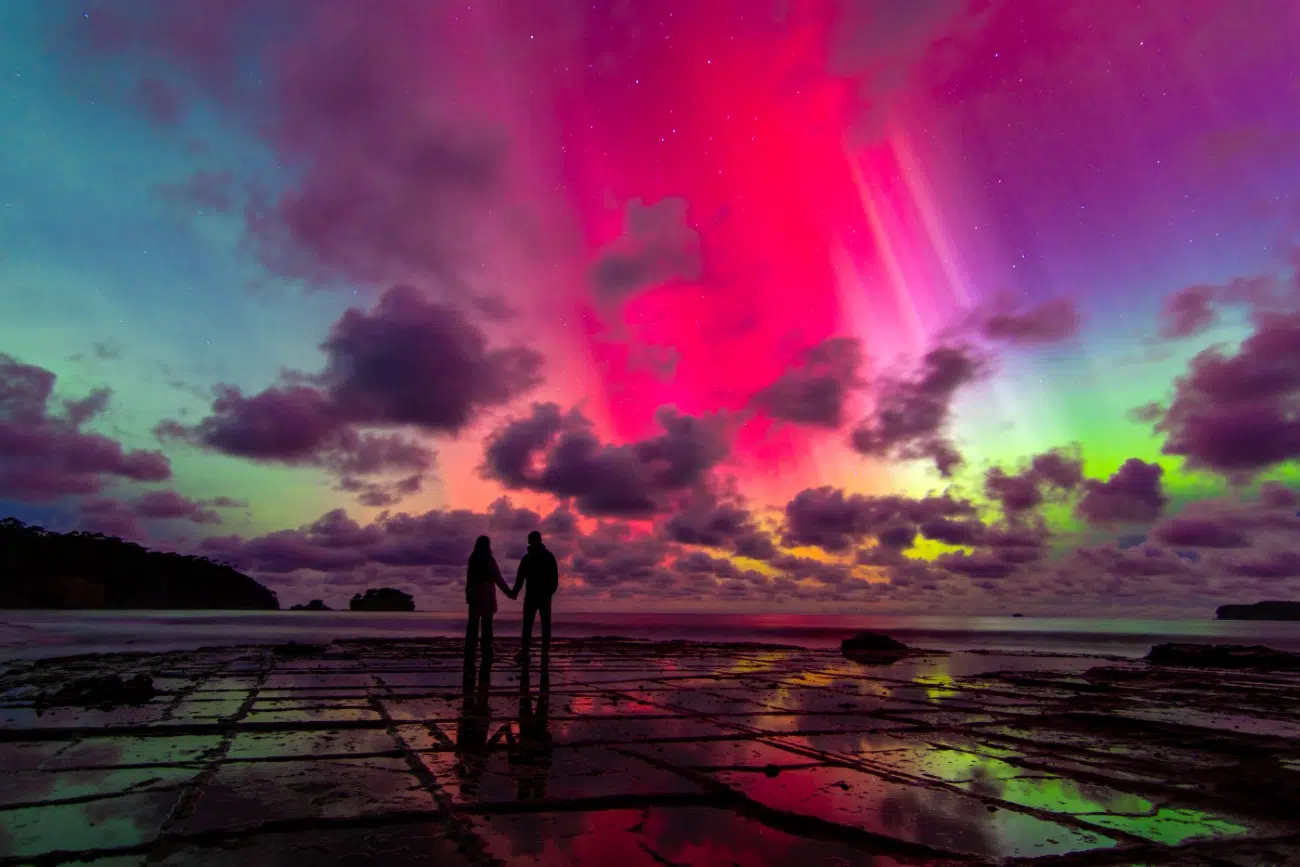
“Your Hand in Mine“ by Jordan Cripps, Shows a physical process in action
“Standing silently on the tiled siltstone of the Tessellated Pavement, this couple watched the immense geomagnetic phenomenon we call the Aurora Australis exploding in the sky above them. The Pavement, comprising 250-280 million-year-old rocks, slowly morphed into patterns that look astoundingly manmade, due to the Earth’s movement and jointing combined with continual sea salt erosion.
The reflections create a beautiful juxtaposition between the old, slow movement of the Earth and new, aggressive movements in the sky. Almost as if the Aurora and the Pavements were working in harmony to show off the raw power and splendor of nature.”
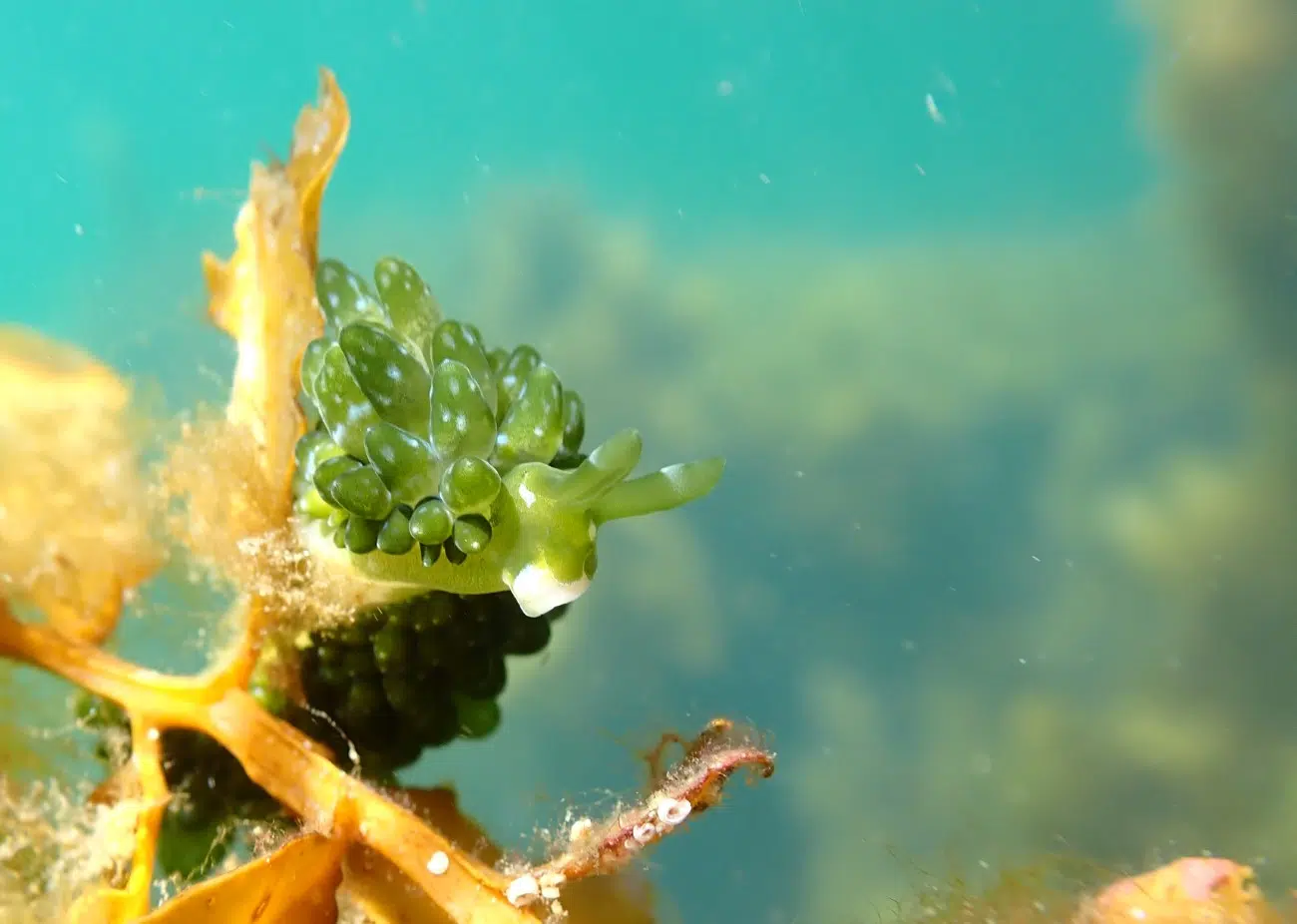
“PhotosyntheSlug” by Alison McNeice, Shows a biological concept
“The cactus sea-slug (Sacoproteus smaragdinus) is a herbivorous sea slug measuring up to 8 cm in length. Despite its size, it is rarely seen as its appearance is almost identical to the Caulerpa cactoides alga it feeds on.
Not only do the cerata – green globules on its back – provide excellent camouflage, they also photosynthesize. The green hues are chloroplasts retained in the slug’s digestive system, a unique symbiotic relationship known as kleptoplasty. The cells continue to photosynthesize, giving its host energy. The cactus sea slug is one of rather few multicellular animals multicellular animal to do so, giving it the nickname “’solar-powered sea slug.’”
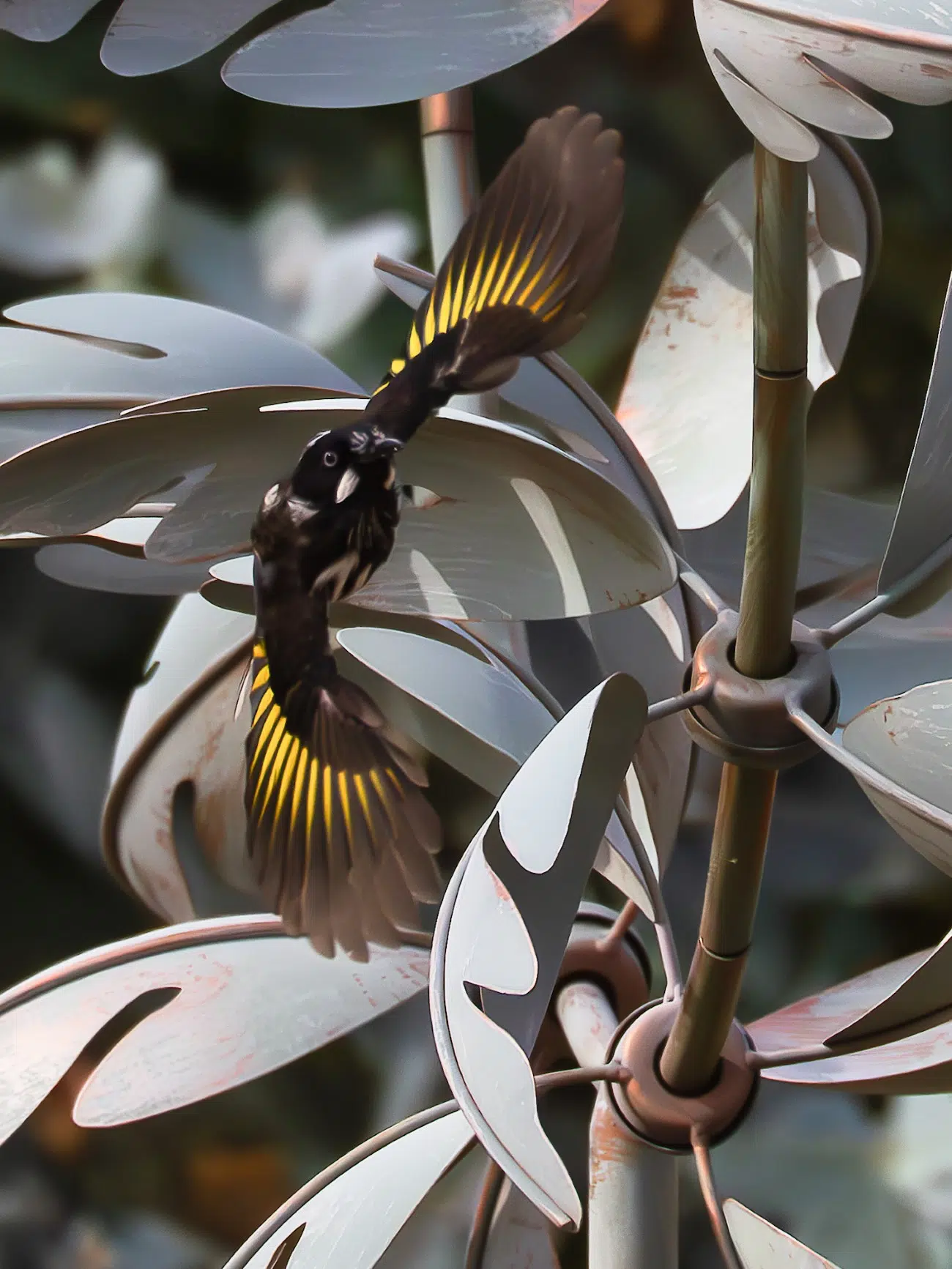
“Aerodynamic attraction” by Deon Scanlon, Shows a scientific principle
“The magic of flight has forever captured the collective imagination of humanity. Birds in flight provide wonderful insights into aerodynamics, and it’s not hard to see how bird wings influence human artistic design, when they interact this closely.”
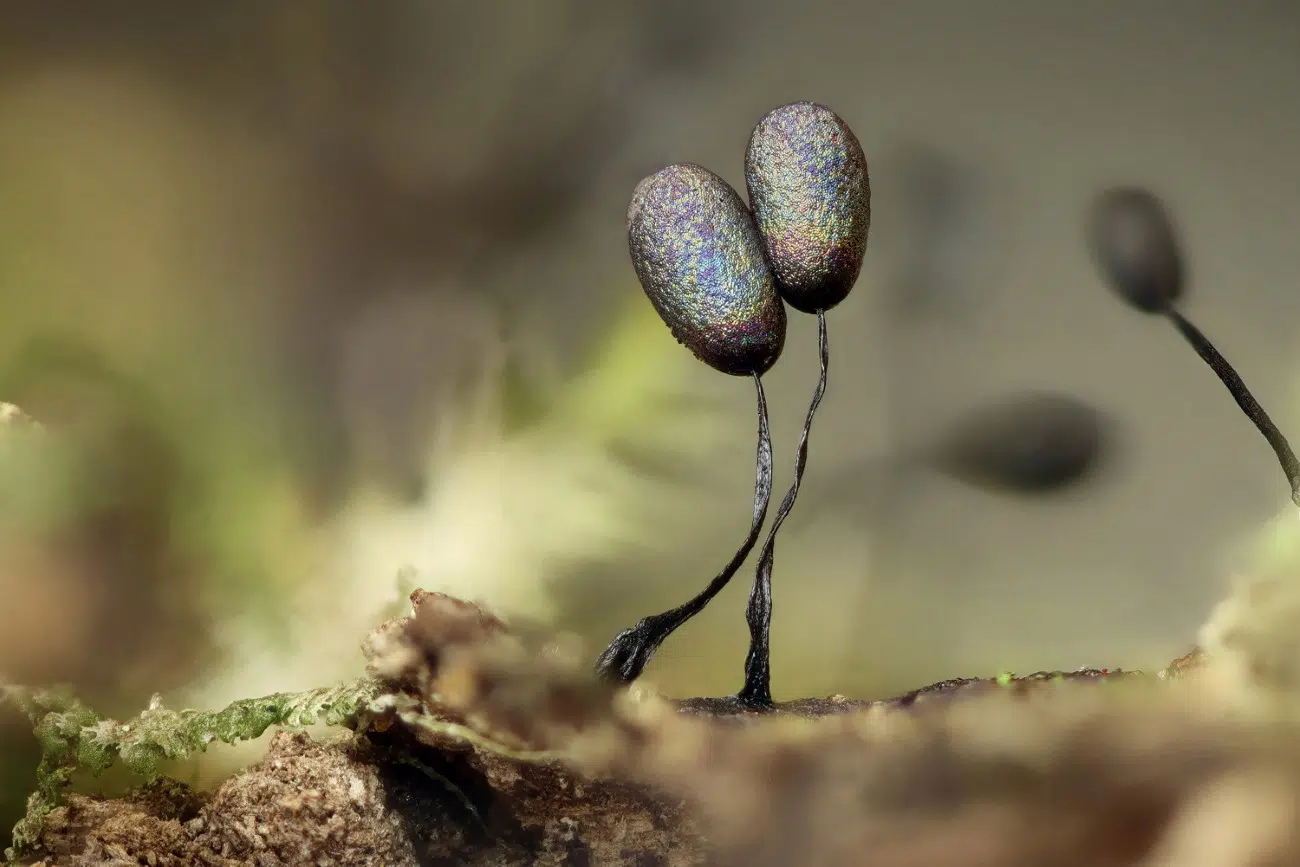
“Slime moulds – overlooked and underestimated” by Sarah Lloyd, Utilizes macrophotography
“This 3 mm tall Lamproderma gracile is one of approximately 175 species of slime mould I have found along a one-kilometre forest track, which gives an inkling of just how common they are on vegetation in all terrestrial ecosystems.
Now classified as Amoebozoans, the three life stages of slime moulds – amoeba, plasmodium, and spore-bearing fruiting body – perform important roles in different ecological niches. Amoebae predate soil-dwelling bacteria and are the principal recyclers of soil micronutrients; plasmodia consume yeasts, fungal spores, and hyphae, and are also important recyclers. Spores and plasmodia provide food for collembola, flies, beetles, snails, and parasitic fungi.”
The photographs will be exhibited at the Tasmanian Museum and Art Gallery throughout August.
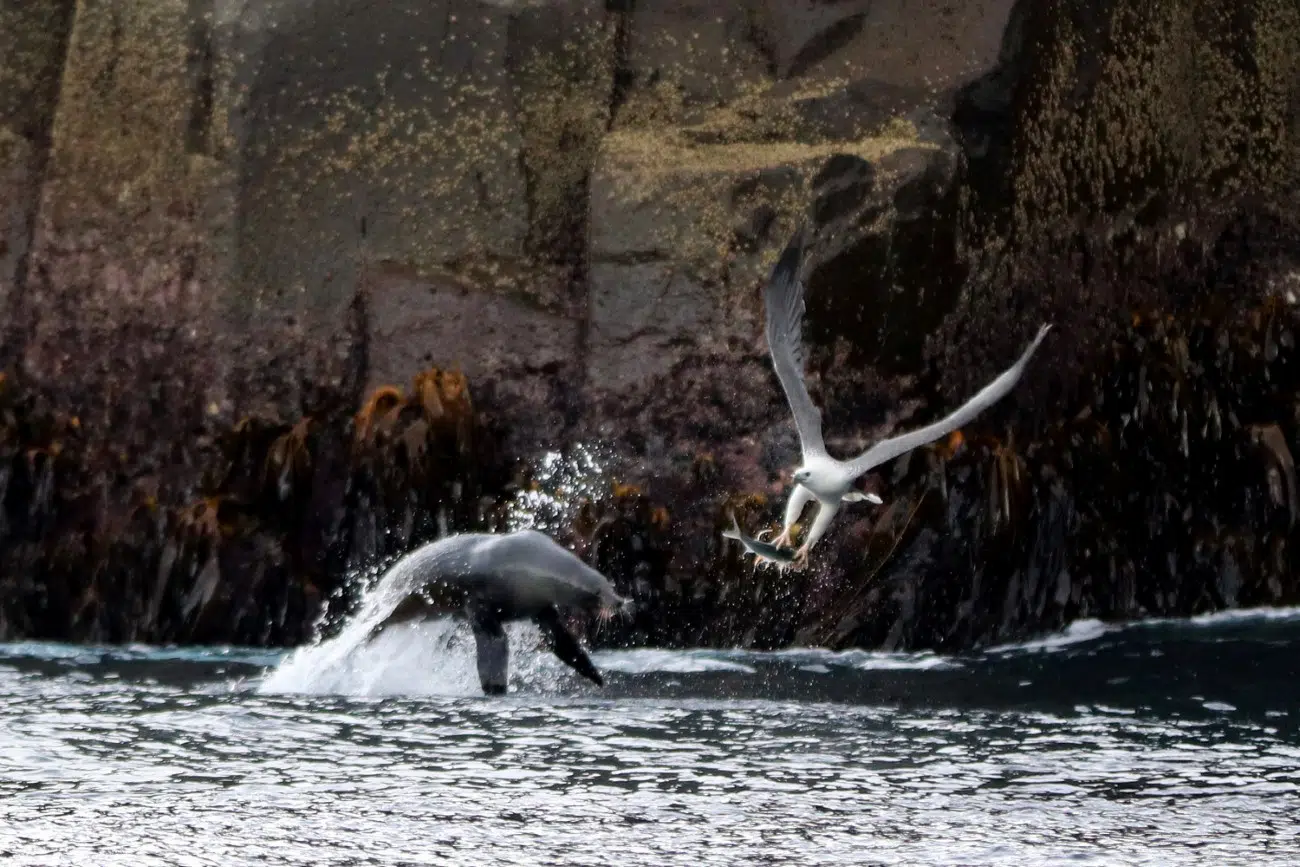
“Lunch time” by Lily Barnett, Shows an ecological concept
“Dynamic interaction between two predators vs one prey. Just moments before the photo, the white bellied sea eagle stole the fish out of the jaws of the fur seal. The photo depicts the eagle as a kleptoparasite, stealing food that another animal has already caught.”
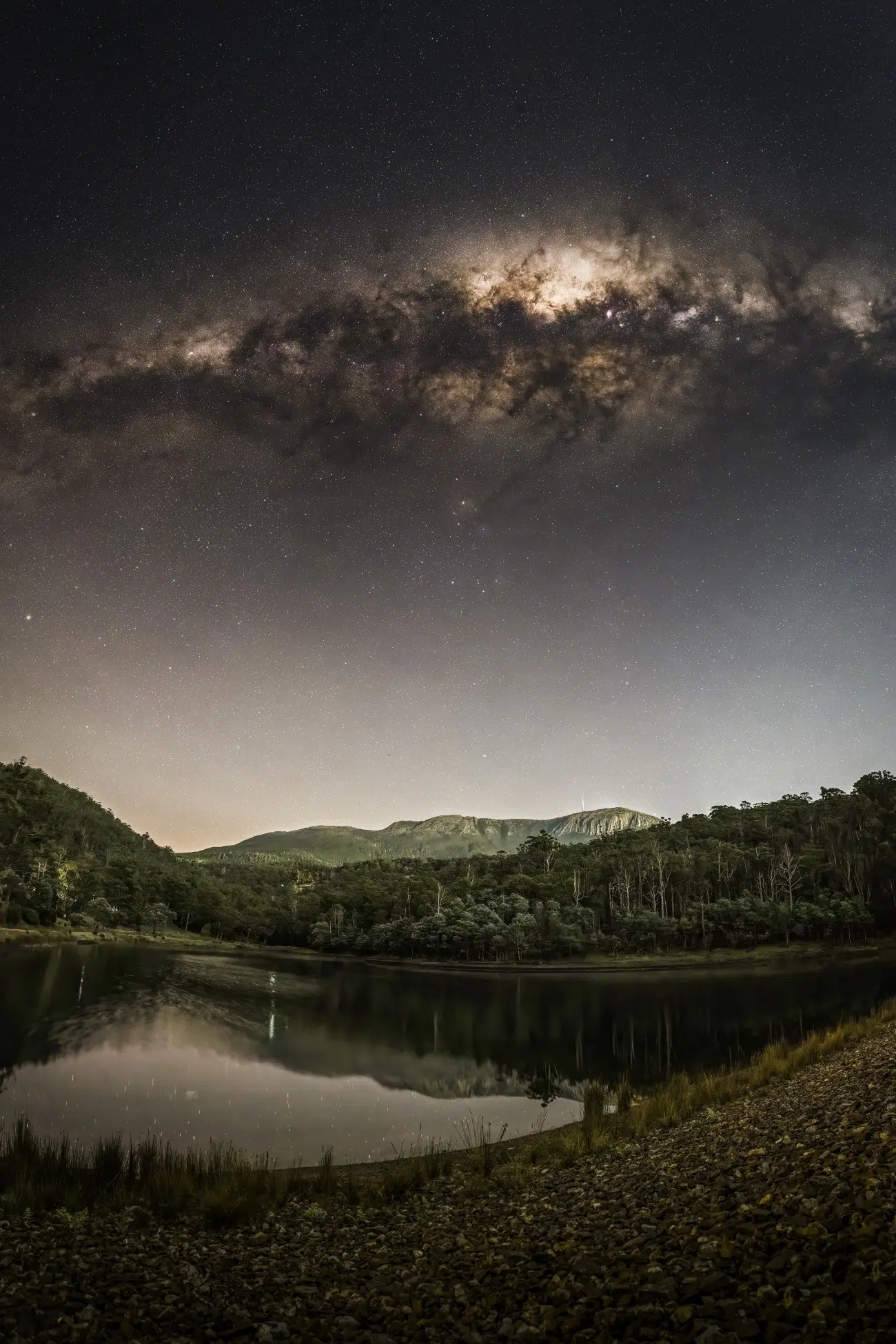
“Milky Way over Waterworks Reserve“ by David Nolan, Shows human impact
“Dark sky conservation is crucial in preserving our view of the night sky, protecting wildlife, and reducing energy waste. Light pollution from cities obscures stars and celestial wonders such as the Milky Way. At places such as the Waterworks Reserve, just minutes from Hobart, we are incredibly fortunate. Despite its proximity to the capital city, for now the skies remain dark enough here for us to witness the Milky Way stretching overhead. This rare urban-fringe experience reminds us of the importance of managing outdoor lighting thoughtfully. Preserving such places allows future generations to enjoy the stars and connect with the universe beyond our increasingly illuminated world.”
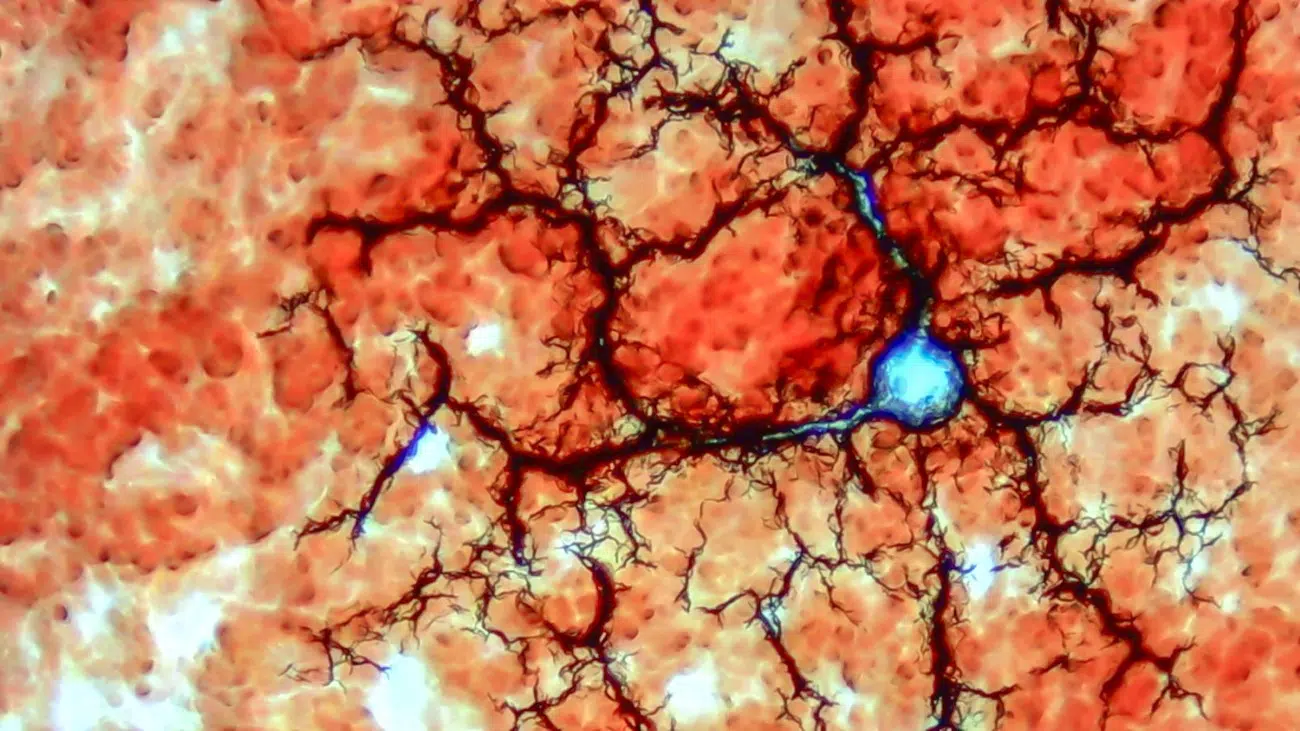
“Inner terrain” by Kelli Miller, Utilizes microscopy
“PPPs are found during a dried blood evaluation, which are used to give a more in depth look into the health of the individual. PPPs are seen as white areas which look like holes with black tentacle-like lines running out from their form. They are soft clots called polymerized protein puddles and vary in size from small white dots to larger ones. They indicate the degree of tissue health, often associated with free radical damage / oxidative stress and toxins in the terrain. The shape, size and location of the PPPs may indicate the nature of the condition. This image was taken on my microscope using a 40X objective. When projected onto a screen it becomes roughly 2000X magnification.”

“Keep swimming… This is my spot” by Rosa Maria Cañedo-Apolaya, Shows a biological concept
“Forsterygion varium, commonly known as the variable triplefin, is a small marine fish usually found around shallow rocky areas and is known for its territorial behavior. This means they actively defend certain areas as their own, especially during the breeding season. This photo was taken in the summer at the Blessington Coastal Reserve. Here, the variable triplefin was seen alongside an eleven-armed sea-star (Coscinasterias muricata).”
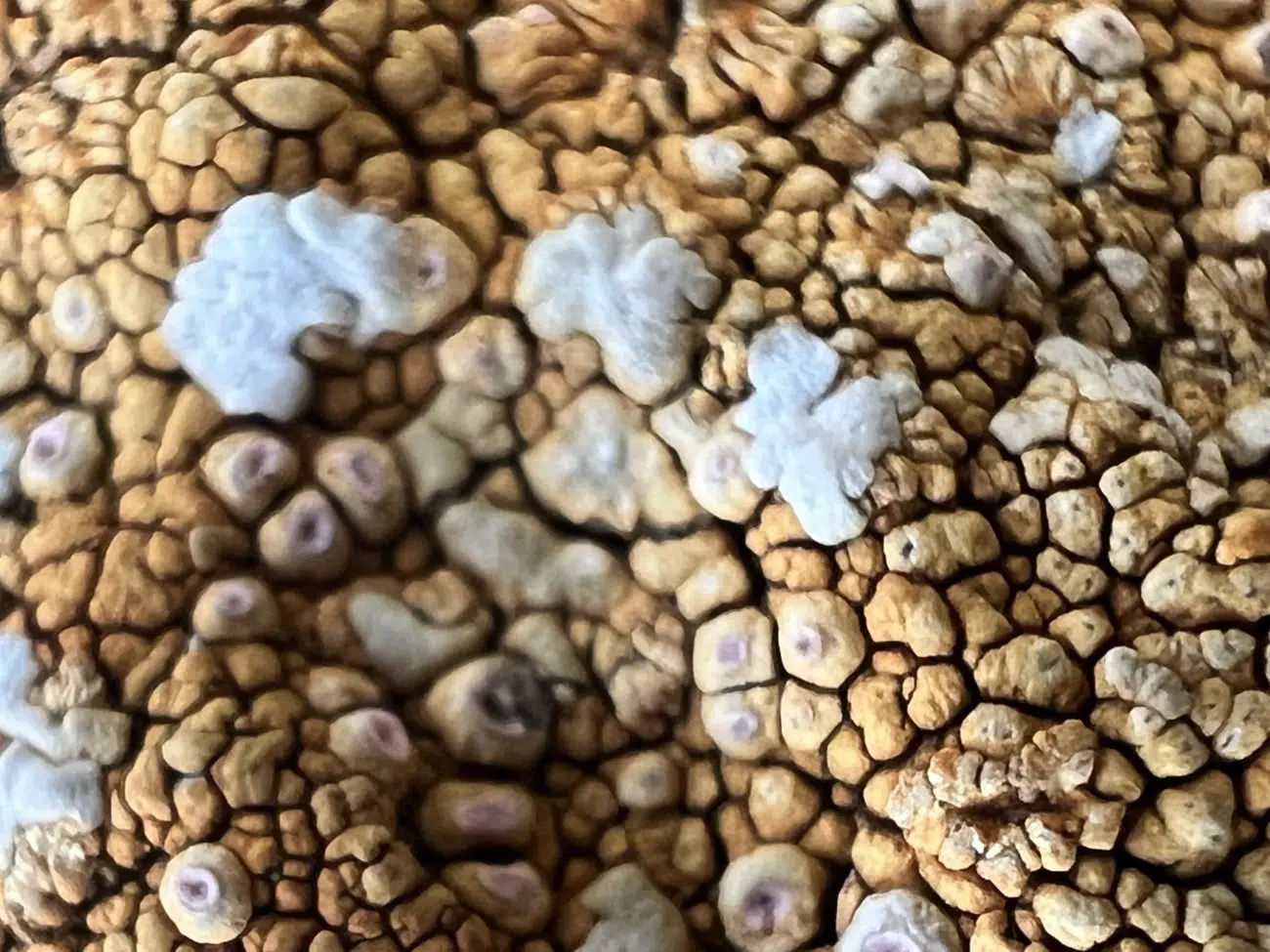
“Liken the lichen” by Matilda Francis, Under 12
“I like the depth in this photo and the way that lichen looks different when you look at it close up. I took lots of photos on a trip that we did to Mt Field, and this is one of my favorites.”
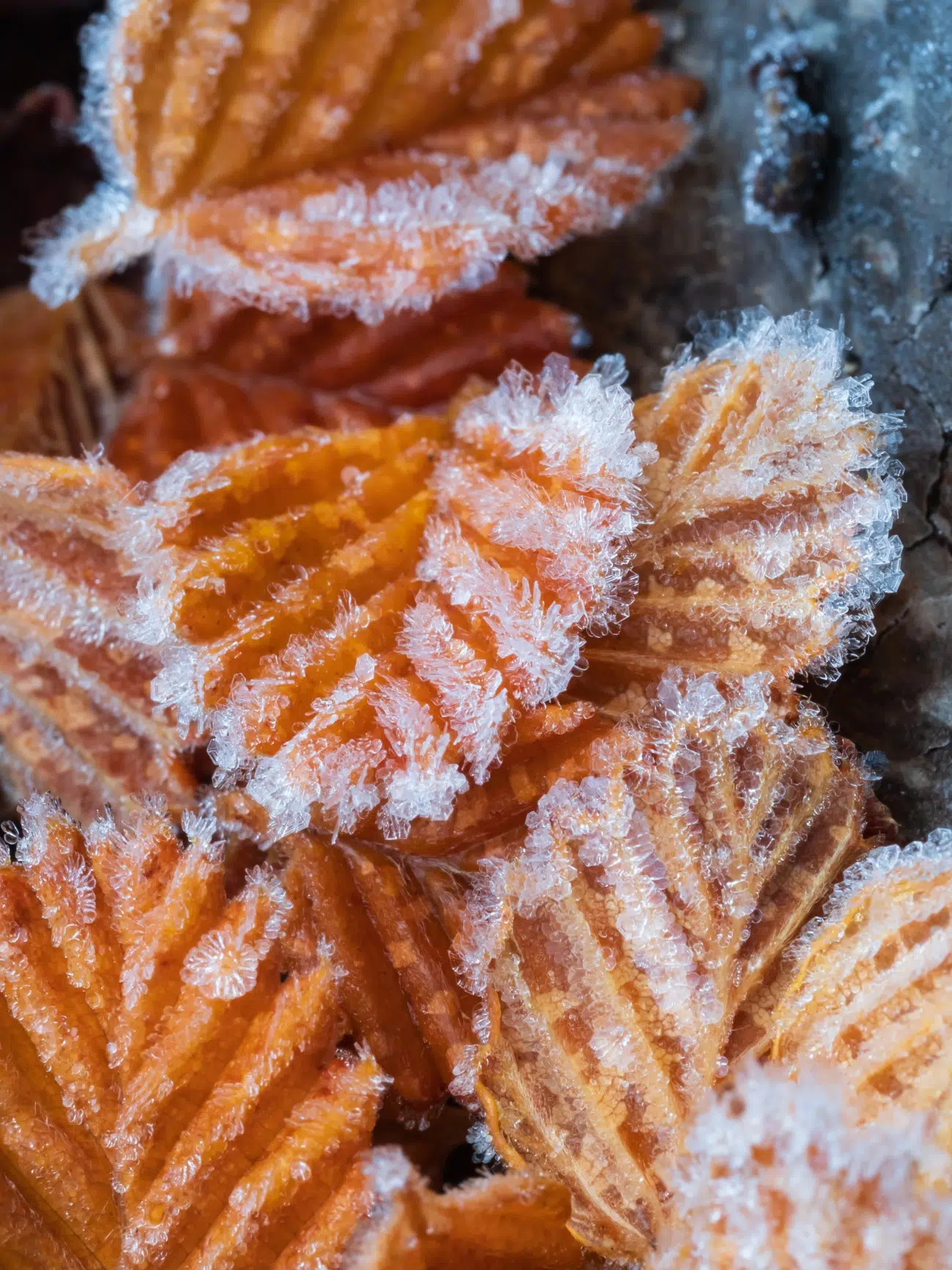
“Crystalline Forest” by Chelsea Bell, Utilizes macrophotography
“Icicles of hoarfrost form on the finely serrated margins of fallen Nothofagus gunnii (deciduous beech) leaves, shown here at sunrise. Radiative cooling overnight causes surface temperatures to drop below freezing. Water vapor from the surrounding air deposits directly as a variety of intricate ice crystals, highlighting the leaf’s venation and structural symmetry. This phenomenon illustrates the microclimatic interplay between moisture, temperature, and plant morphology in late Autumn/early Winter.”
Beaker Street Festival: Website | Facebook | Instagram
My Modern Met granted permission to feature photos by Beaker Street Festival.
Related Articles:
Remarkable Photo of a Single Atom Wins Science Photography Contest
Glowing Frog on a Bioluminescent Mushroom Wins Science Photography Contest
Nikon Small World Contest Celebrates 50 Years of Photographic Excellence Under the Microscope
British Ecological Society Photo Contest Celebrates the Breadth and Beauty of the World’s Biodiversity

